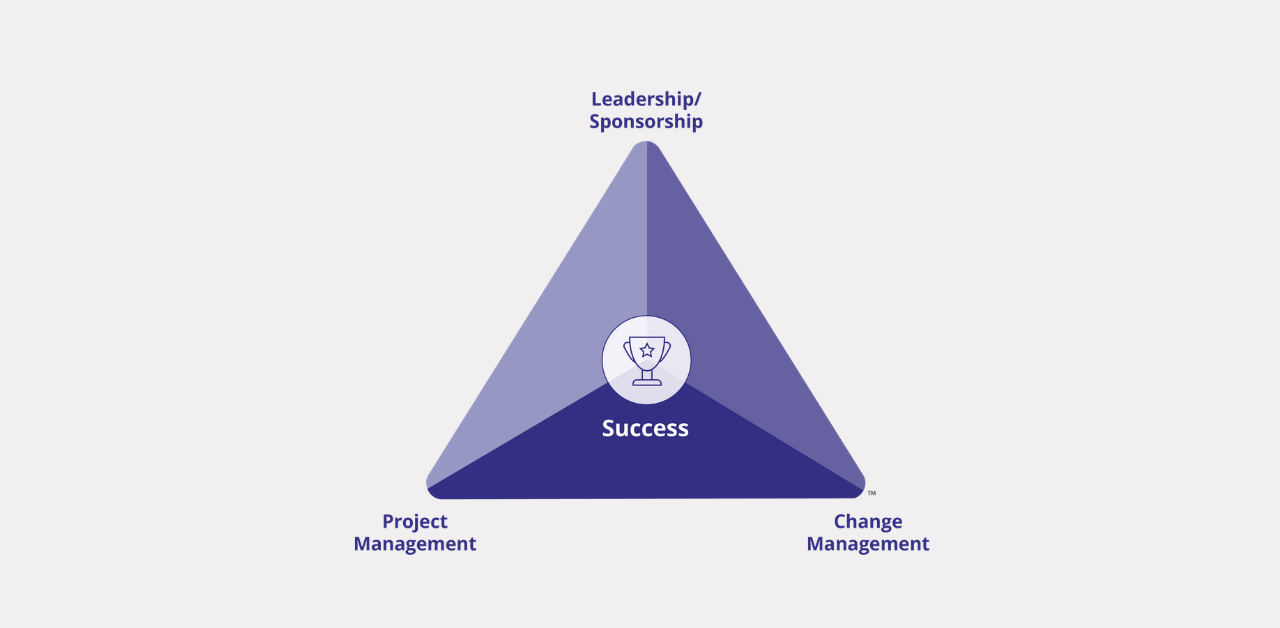When instructing on Change Management, I find that the most taxing lessons for participants focus on leadership. I suppose most people who come into the programme believe that their leadership is exempt from their influence. As we work to dispel this belief, I can see their minds straining to deal with the message that their leadership must be assessed and coached in their role. “How can we presume to expect more out of our leaders?” “How can I possibly influence them?” And, “What if they are not interested in my help?” They are thinking.
They are difficult questions to be sure, and we are hoping to answer them all in our look at change leadership during the coming weeks. But, before we can help Change Managers influence their leaders, we first need to think about what change leadership means and, by doing so, provide a tool to help the leaders measure their own capabilities. Let’s start with the most basic question: “What is change leadership?”
The most common definition for change leadership was put forward by Higgs and Rowland as:
"The ability to influence and enthuse others through personal advocacy, vision and drive, and to access resources to build a solid platform for change."
Through this definition and others like it, the act of leading change has been relegated to a leadership competency. One of many. However, I am one who holds that change leadership is, in the simplest terms, leadership. To be a good leader, one has to be good at leading change. By definition “leading” is moving the organisation forward toward a particular goal. If one is not changing the organisation, one is just maintaining the status quo, not leading. Moreover, in the current environment where change is accelerating, change is complex, and change is increasingly disruptive; we need to elevate our definition to include enabling the organisation’s responsiveness and agility. That is, increasing the organisation's change maturity by creating an environment for rapid and constant change.
Unfortunately, even at the most fundamental level, the role of a "sponsor", change management lingo for “leader,” is not always understood. In fact, Prosci research show that 50% of the time, sponsors are not adequately aware of their role.

Leaders generally understand the need to make decisions and are often quite adept at it. However, leading successful change is also about actions leaders take. So, what are the simplest actions that a leader can take? Here are eight simple actions for leading successful change:
- Recognise your Role as the Leader/Sponsor:
In all the research conducted by Prosci and others, the number one success factor when for successful change is effective leadership. Intuitively, we know this but actually acting on it is more difficult. At a minimum, the role of the Sponsor includes being the chief communicator of “why” the change is occurring, being active and visible during the implementation if the change, and building a coalition of other leaders in the organisation. All of these actions require being the person in the front of the change which is why people struggle. Truly leading people can be exhausting. - Be Accountable for the Change:
This sounds obvious, but many leaders believe their role is simply to set the goals, assign the resources, determine the timeline, and then delegate all other aspects of the change. There is a difference, however, between assigning responsibility and delegating accountability. Assigning responsibility is a good strategy of empowerment and division of work, plus it gets others involved so they feel they own the change. Delegating accountability is essentially saying, “I am not willing to take the risk,” and/or “I see the change as unimportant,” and/or “I believe the change will be unsuccessful and want to distance myself from the results.” Demonstrate that you are accountable if you want success. - Be Aware of Good Change Practice:
There is a preponderance of material on leading change in the market today. Some of it is more useful than others. Setting aside one’s ego, accepting coaching, and engaging in continuous learning is the best strategy for leadership success. Some of the best practices for leaders include:
- Recognising that change occurs at the individual level and, therefore, needs to be managed at the individual level,
- Understanding that change is not the work of one or even a few people but involves the entire impacted organisation,
- Seeing change management as a strategy, discipline, and process to be applied with intent.
- Recognising that change occurs at the individual level and, therefore, needs to be managed at the individual level,
- Communicate the Business Case for Change:
A leader must be the one who not only creates the vision for change but also ensures that the business case is understood throughout the organisation. Helping people understand the benefits of the change helps them on their individual change journey by allowing them to make an informed decision to support the change. Ensuring that the goals are measurable will help reinforce their decision as the change progresses. - Create the Environment for Change:
In my view, a leader’s primary responsibility is to create an environment for change to thrive. This means enabling people to be successful while setting simple rules of engagement. If people feel threatened or uncertain, they will not step out of their comfort zone. But, if they understand the simple rules, feel they will be rewarded, and find comfort in the change process, they will become passionate about change. This holds at all levels of the organisation as people leaders can add to the energy or take the air out of any change effort. - Recognise the Complexity of the Situation:
Change can occur on several levels. A leader needs to know what level the initiative requires and adjust the leadership style accordingly. There is simple or obvious change when cause and affect are clear and a command style can be warranted, while complicated change favours following best practices and strong analytical skills, and then there is complex change when elements are uncertain and unpredictable requiring a more experimental approach. Each of these situations requires a different type of leadership. Applying a simple approach to a complex situation and vice versa can lead to a devastating outcome. - Focus on Removing Barriers to Change:
Change leadership is less about persuasion or manipulation and more about removing barriers. Everyone in an organisation has their context for why they either favour or resist change. Persuading everyone at scale is problematic. Better to understand what is preventing people from changing and open the pathway enabling them to accept the change. In the Prosci method, this is done through by applying the ADKAR individual change method. By identifying their barrier point, we can decide what actions to take for that individual. - Understand That You Pay for Change No Matter What:
Budgets are always a concern. “How much is applying change management going to cost me?” is a common question. Let’s be clear on this point, good leaders understand they will pay for change management one way or another. Either they are taking the actions to successfully implement and enable adoption and only need to call it out, or they will have to fund a follow up effort to drive adoption after the change fails to achieve results, or they will get a lower return on investment for their change initiative than expected. One of these means of payment drives success, while the other two can limit careers. Allocate the resources for change management up front as part of a disciplined approach, and you will significantly raise the probability for success.
As you may have started to guess, these eight simple actions are not just for the people at the top of the ladder. They apply to anyone who might be a sponsor of the change. One major mistake is to assume that the leadership role is reserved for “the boss.” Anyone who leads people impacted by change can be a sponsor, so at varying levels, these eight simple actions apply to them as well.
Consider looking into the following Prosci programmes for those managing change and leading change:
Take a look our three-day Prosci Practitioner Certification Programme, we run these as open-enrolment courses, or bring them to your teams with private training.
We also run one-day Prosci Sponsor briefing workshops for organisational leaders who are leading change and need to understand their sponsor roles so they can deliver effective, meaningful change with measurable results.


